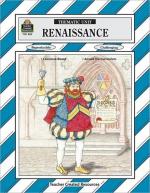|
This section contains 843 words (approx. 3 pages at 300 words per page) |

|
Villages. Christian Europe was full of villages and walled cities. Villages typically had a population of three hundred to five hundred people who lived in windowless houses with thatched roofs. Villages were relatively isolated but were usually not far from a market town or city. Peasants in villages were self-sufficient, which means that virtually all of their needs were supplied locally. Most villages were dependent on the local production of grain, the staple product of villagers' diets, but villagers also needed to produce other essential crops. Frequently the local land or climate was not optimal for the production of staple items, but villagers would continue to produce poor exemplars of staples rather than live without them. Agriculture in the Mediterranean Basin was based on the same three crops that had dominated in ancient times: wheat, olive oil, and grapes for wine. A plow that simply...
|
This section contains 843 words (approx. 3 pages at 300 words per page) |

|




